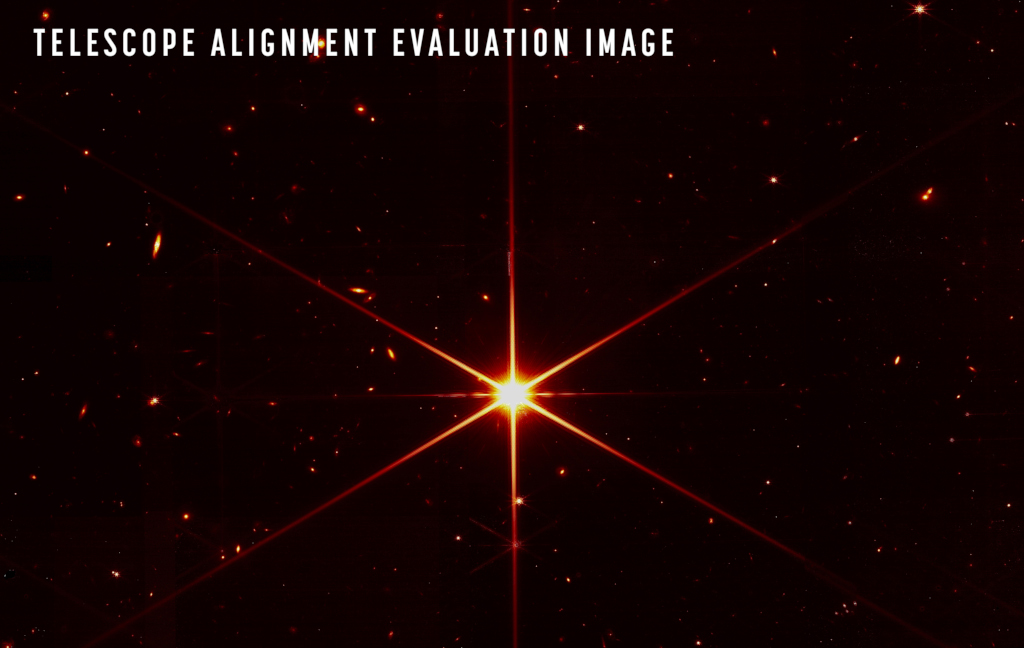2022年3月19日
2MASS J17554042+6551277
Image Credit : NASA, STScI, JWST
Explanation: 2MASS J17554042+6551277 doesn’t exactly roll off the tongue but that’s the name, a coordinate-based catalog designation, of the star centered in this sharp field of view. Fans of the distant universe should get used to its spiky appearance though. The diffraction pattern is created by the 18 hexagonal mirror segments of the James Webb Space Telescope. After unfolding, the segments have now been adjusted to achieve a diffraction limited alignment at infrared wavelengths while operating in concert as a single 6.5 meter diameter primary mirror. The resulting image taken by Webb’s NIRcam demonstrates their precise alignment is the best physics will allow. 2MASS J17554042+6551277 is about 2,000 light-years away and well within our own galaxy. But the galaxies scattered across the background of the Webb telescope alignment evaluation image are likely billions of light-years distant, far beyond the Milky Way.
Tomorrow’s picture: day = night
2MASS J17554042+6551277
影像提供: NASA, STScI, JWST
说明: 在这幅极清晰的影像中心的恒星,名为2MASS J17554042+6551277,它当然并非耳熟能详的星名,而是它在一部以天体座标为编录基准的星表(2MASS)之名称。不过,遥远宇宙的粉丝应很习惯它带芒的外观。这幅种绕射图案,系源自韦伯太空望远镜的18片六边形分镜。在镜面展开之后,这些镜片经过拼合调整,以在红外波段达到绕射极限,并共同组成6.5米口径的主镜。而这幅来自韦伯近红外相机(NIRcam)的影像,则证实它们精确对齐的程度已达物理极限。2MASS J17554042+6551277距离我们约2,000光年远,近在我们自己的银河系之内。不过,散布在韦伯望远镜校准评估影像里的背景星系,距离可能有数十亿光年远,远在银河系的后方。
明日的图片: day = night







